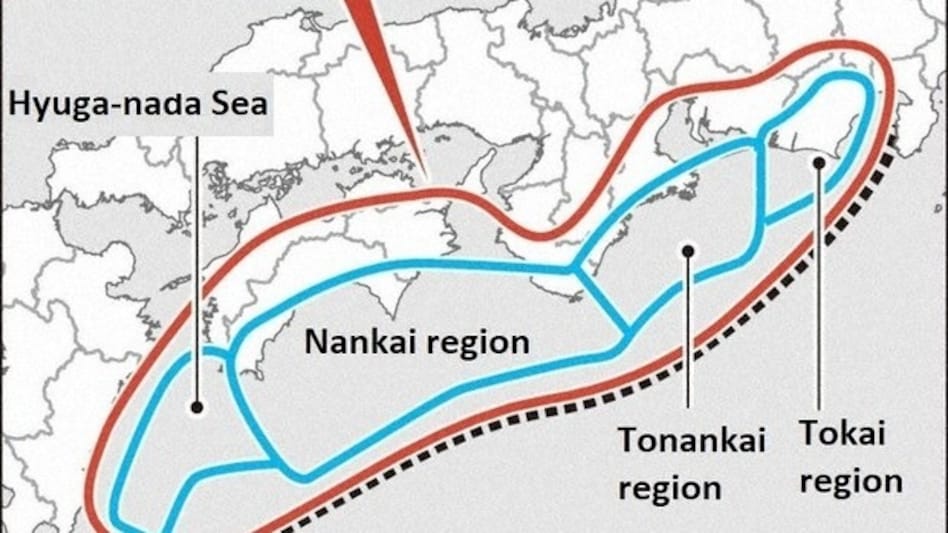 A quake in the Nankai Trough, experts warn, could eclipse even that catastrophe.
A quake in the Nankai Trough, experts warn, could eclipse even that catastrophe. A quake in the Nankai Trough, experts warn, could eclipse even that catastrophe.
A quake in the Nankai Trough, experts warn, could eclipse even that catastrophe.In the quiet depths off Japan’s Pacific coast, a silent threat is growing louder. Scientists are sounding the alarm over a potentially ‘apocalyptic’ megaquake in the Nankai Trough — a seismic hotspot long overdue for eruption. With an 80% chance of striking within the next 30 years, the projected magnitude nine earthquake could trigger 100-foot tsunamis and claim over 300,000 lives. Japan, no stranger to seismic terror, now faces a threat experts warn could surpass even the devastation of the 2011 disaster.
The looming threat centers on the Nankai Trough, a deep-sea trench formed by two tectonic plates colliding just off Japan’s Pacific coast. Scientists now estimate a magnitude nine earthquake could erupt from this fault line — one that historically triggers a megaquake every 100 to 200 years.
Japan's government has raised the alarm, predicting that such a quake could lead to the deaths of up to 300,000 people. Tsunamis generated by the tremor could reach staggering heights of 98 feet, devastating coastal regions and leaving little time to escape. Some cities may receive just two minutes’ warning before the first wave crashes ashore.
In the worst-case scenario, the disaster could cause damages reaching $1.83 trillion, destroy 2.35 million buildings, and displace 12.3 million people. The Japanese Cabinet Office has revised these estimates for the first time since 2013, underlining the escalating urgency of the situation.
Tokyo is bracing for waves up to 30 feet, while coastal cities like Kuroshio and Tosashimizu could be hit by waves as high as 112 feet. The government is reinforcing buildings and bolstering flood defenses, though experts warn these efforts will only marginally reduce the projected death toll.
The memory of 2011 still lingers — when a magnitude nine quake struck just 80 miles offshore, unleashing 132-foot waves and killing 15,500 people. That event also led to a nuclear crisis at Fukushima, forcing thousands to evacuate their homes.
A quake in the Nankai Trough, experts warn, could eclipse even that catastrophe. Alongside mass casualties and destruction, the resulting floods may spark outbreaks of infectious disease, deepening the humanitarian crisis.
If it strikes, the Nankai megaquake may not just be a national tragedy — it could go down as one of the most devastating natural disasters in recorded history.